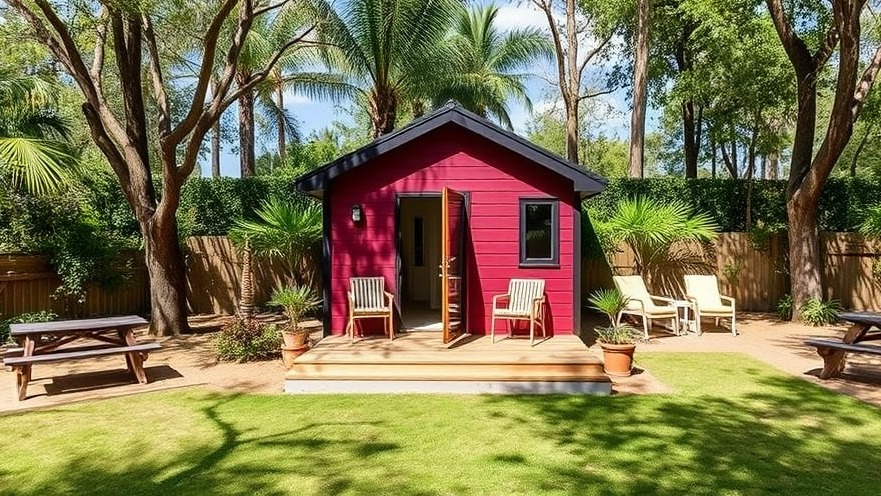
Discover the Maroon Cabin: A Blend of Comfort and Nature
For digital nomads seeking a serene escape from urban life, the new Prefab House Changeover cabin in the lush woodlands of Barcelona presents an innovative option. Designed by architectural studio TEST, this maroon holiday cabin is not just a place to unwind but a model of how modern design can harmoniously coexist with nature.
Contextualizing the Cabin's Design
This cabin was born from the necessity to replace a dilapidated pre-fabricated structure that lost its charm. TEST faced the challenge of adhering to stringent local building regulations while also respecting the natural surroundings of beech trees that dominate the landscape. By opting to redesign rather than demolish, they set a precedent for responsible architecture that prioritizes sustainability.
The Elegance of Modular Architecture
Manufactured offsite, the cabin consists of eight balloon-framed modules that showcase strength and simplicity. This method allows for rapid assembly and reduced waste, making it a perfect example of how modern technology can enhance traditional building practices. Transported to the site on trucks, these modules were meticulously assembled together, showcasing both practicality and aesthetic appeal.
Embracing the Elements: Design Choices for Comfort
The choice of a hip roof clad in metal not only meets the regional climatic demands but also gives a contemporary edge to the rustic appearance of the cabin. With overhangs providing natural shade, the design anticipates environmental factors while still offering breathtaking views of the surroundings. Large windows equipped with flexible shutters allow for ventilation and adjustability, making the interior feel open and inviting.
Ergonomics at the Heart of the Cabin's Interior
The cabin’s interior is designed to foster a productive environment, with three flexible rooms that adapt to a digital nomad's needs. The use of stained pine plywood increases warmth, contributing to a cozy atmosphere, while avoiding fixed features ensures that the space can be customized based on working requirements. Such elements are essential for creating an efficient workspace that caters to comfort and productivity.
Future Trends in Remote Workspaces
As more individuals opt for remote work, the relevance of cabins like the Prefab House Changeover extends beyond just a vacation home. They serve as models for future living spaces that blend work and leisure. The rise of such innovative designs suggests a growing trend towards integrating comfortable, flexible workspaces in natural settings, which can significantly improve well-being and productivity for digital nomads.
Inspiration from Nature: Lessons in Design and Functionality
The interplay of natural wood finishes with modern metallic elements not only creates visual harmony with the woodland surroundings but also brings forward the principles of biophilic design in architecture. For digital nomads, understanding the importance of a well-designed space can lead to enhanced focus, reduced stress, and a rejuvenating work-life balance.
A Call for Sustainability in Design
This cabin exemplifies a growing awareness of eco-friendly building practices. The emphasis on modular construction minimizes environmental impact, which is a vital consideration for today’s conscious designers and consumers. Building cabins that are efficient and environmentally friendly speaks to a broader commitment to designing spaces that are sustainable.
By investing in such innovative cabins, digital nomads not only embrace the flexibility of remote work but also contribute to a more sustainable future. The Prefab House Changeover is a testament to what smart, thoughtful design can achieve in enhancing our lifestyles.
If you’re intrigued by this blend of architecture and functionality, consider exploring how you can create your perfect work-from-home setup, drawing inspiration from the maroon cabin’s successful integration with its natural surroundings.
 Add Row
Add Row  Add
Add 




Write A Comment